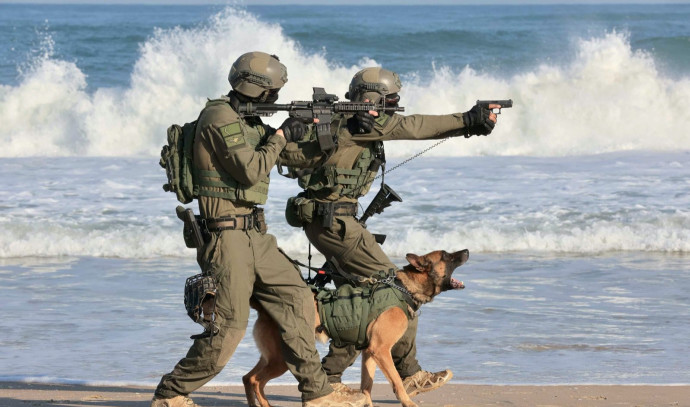Urban warfare expert John Spencer outlined how Oketz’s strategies, particularly in handling urban and subterranean operations, could inform US military preparations for future conflicts in dense urban environments in an analysis on the Modern War Institute’s website on Wednesday.
Spencer referenced a specific moment in northern Gaza where an IDF commander, facing a heavily fortified Hamas position near a tunnel entrance, deployed a specially trained military dog rather than risk soldiers in a hazardous underground mission. This, he noted, highlighted the potential of military working dogs to mitigate risk in complex combat scenarios.
Established in the 1980s, Oketz has supported every major Israeli military campaign, including the 2006 Lebanon War and recent operations in Gaza. The unit sources most of its dogs—primarily Belgian Malinois—from European breeders.
Each year, around 70 dogs are selected for a rigorous two-year training program that prepares them for roles such as attack operations, explosive detection, and tunnel navigation.
Spencer noted that this specialized training, along with the strong bonds formed between dogs and handlers, has been crucial to the unit’s operational effectiveness in high-pressure urban settings.
Gathering intelligence
A key element of the IDF’s strategy, according to Spencer, is its use of remote-controlled canine operations. Dogs equipped with radio packs and cameras allow handlers to guide them from a distance, providing real-time intelligence without exposing soldiers to direct danger. This capability, first implemented during operations in southern Lebanon, has been further refined in recent years.
Spencer suggested that this approach offers a model for the US military, where similar remote capabilities could enhance reconnaissance and threat detection in urban warfare.
The war in Gaza has demonstrated the importance of scaling canine operations to meet the demands of sustained combat, he explained. After the October 7 Hamas attack, the IDF increased its procurement of military dogs to maintain readiness.
Spencer noted that this reflects the need for militaries to sustain a robust force capable of handling prolonged or large-scale engagements.
Psychological benefits
The Oketz unit operates in small teams, each consisting of a commander, deputy, and two handler-dog pairs. Spencer highlighted this structure as a way to support the psychological resilience of both soldiers and dogs in combat zones, where stress can be high. The team-based approach fosters operational cohesion and helps mitigate the mental health challenges associated with urban warfare.
The IDF’s adjustments for combat in urban environments include providing protective booties for dogs to prevent injuries from sharp debris and rubble. Spencer pointed to this as an example of the practical adaptations required in urban conflict, where even minor issues can impact overall operational effectiveness.
Since the start of the Gaza conflict, the Oketz unit has lost three soldiers and 42 military working dogs. Spencer noted that these figures underscore the challenging nature of their missions. However, the continued use of canine units reflects their strategic importance in detecting threats, supporting tactical operations, and protecting soldiers in hazardous conditions.
Spencer concluded that lessons from Oketz’s operations could inform how militaries worldwide approach the use of military dogs in urban settings. As militaries continue to adapt to evolving combat environments, the integration of specialized canine teams may play a growing role in ensuring operational readiness and troop safety – something Spencer stresses the United States should take note of.
Unfortunately, as highlighted by Spencer, three Oketz unit soldiers and 42 dogs have been killed by terrorists in Gaza.
“These sacrifices highlight the intensity of the missions these teams undertake,” Spencer wrote. “But the missions’ intensity is matched by their critical nature.”
Source link https://www.jpost.com/israel-news/defense-news/article-836019


